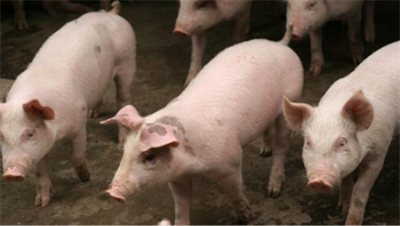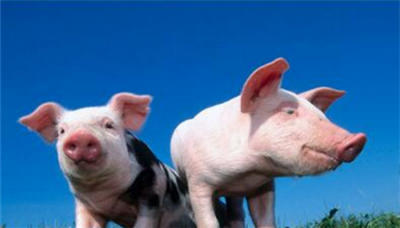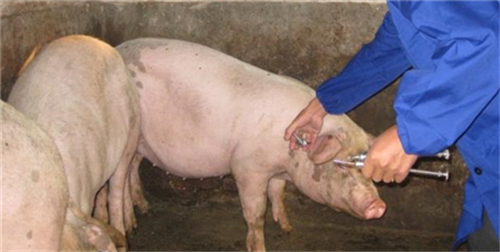Strict prevention of porcine diarrhea caused by coronavirus disease in winter
The main coronavirus diseases that cause porcine diarrhea are porcine transmissible gastroenteritis and porcine epidemic diarrhea; the former is caused by porcine transmissible gastroenteritis virus of coronavirus family, which is mainly infectious disease of vomiting and diarrhea. Clinically, pigs of all ages are susceptible to infection, but suckling pigs under 10 days of age have the highest morbidity and mortality, up to 100%. The latter is an intestinal infectious disease caused by porcine epidemic diarrhea virus with diarrhea, vomiting and dehydration as the main symptoms.
First, the symptoms of the disease are mostly acute and sudden. At the beginning of the disease, the body temperature was slightly higher, about 40 ℃ ~ 41 ℃, lethargic, lazy, loss of appetite, thirst, hair standing without light, feces from thick to thin, fecal color grayish yellow or gray-black, stench, late feces such as water, anal incontinence, buttocks, hind limbs and tail contaminated by sparse feces, small and yellow urine, loss of appetite, reluctance to move, walking hobbling, lying trembling, sunken eyeballs, body temperature drop. Usually die of exhaustion within 2-3 days. After weaning piglets, fattening pigs and breeding pigs have mild clinical symptoms, reduced appetite, are willing to drink clear water, feces are thin, fecal color is like yellow sauce, feces are often mixed with undigested feed, depressed spirit, rapid weight loss, sunken eye sockets, lying on the ground unwilling to move, the lower limbs, ear tip and tail tip are cold in the later stage, if they can be treated in time, most of them can be cured. Adult pigs, breeder pigs and strong pigs also recover from the disease.
2. Etiological analysis: diseased pigs and infected pigs are the main sources of infection, and the virus is transmitted by excretion from feces to pollute the environment. The main route of infection is that healthy pigs eat feed and water containing the virus, and are infected by inhaling viral air and dust through the respiratory tract. In the closed pig house, the pigs with high humidity, low temperature and high density are more likely to be infected with the disease in late autumn and early winter, which makes the pigs in the whole farm sick within a few days.

At present, there is no specific treatment for the occurrence of the disease. Symptomatic treatment can relieve symptoms and prevent secondary infection; strengthening nursing can reduce death. The specific practices are as follows:
1. Treatment of mildly diseased pigs. Newcastle disease I vaccine was injected with 0.5 grams of each dose plus 10 milliliters of normal saline, 2 milliliters per pig, and 0.2 milliliters of ribavirin per kilogram body weight, once a day.
two。 To treat seriously ill pigs. Enrofloxacin injection was used to prevent secondary infection. 0.1 ml per kilogram of pig body weight (including 25 mg of enrofloxacin) was injected intramuscularly twice a day for 3 days. Or Changyanling injection, 0.3 × 0.5 ml per kg of pig body weight, intramuscular injection, twice a day, continuous injection for 2 ~ 3 days as a course of treatment. At the same time of injection, add oral rehydration salt to drinking water as soon as possible. The preparation method of oral rehydration salt is as follows: 35 grams of refined sodium chloride, 25 grams of sodium bicarbonate, 15 grams of potassium chloride, 200 grams of glucose and 10 kilograms of water. Pigs with no appetite for drinking were given 40-80 milliliters with a metal syringe, 5-6 times a day. 5%-10% glucose saline and 5% sodium bicarbonate injection can be injected intravenously, each 500-1000 ml, twice a day for 2-3 days. Limit your diet to nutritious and digestible feed.
Related
- On the eggshell is a badge full of pride. British Poultry Egg Market and Consumer observation
- British study: 72% of Britons are willing to buy native eggs raised by insects
- Guidelines for friendly egg production revised the increase of space in chicken sheds can not be forced to change feathers and lay eggs.
- Risk of delay in customs clearance Australia suspends lobster exports to China
- Pig semen-the Vector of virus Transmission (4)
- Pig semen-the Vector of virus Transmission (3)
- Five common causes of difficult control of classical swine fever in clinic and their countermeasures
- Foot-and-mouth disease is the most effective way to prevent it!
- PED is the number one killer of piglets and has to be guarded against in autumn and winter.
- What is "yellow fat pig"? Have you ever heard the pig collector talk about "yellow fat pig"?



